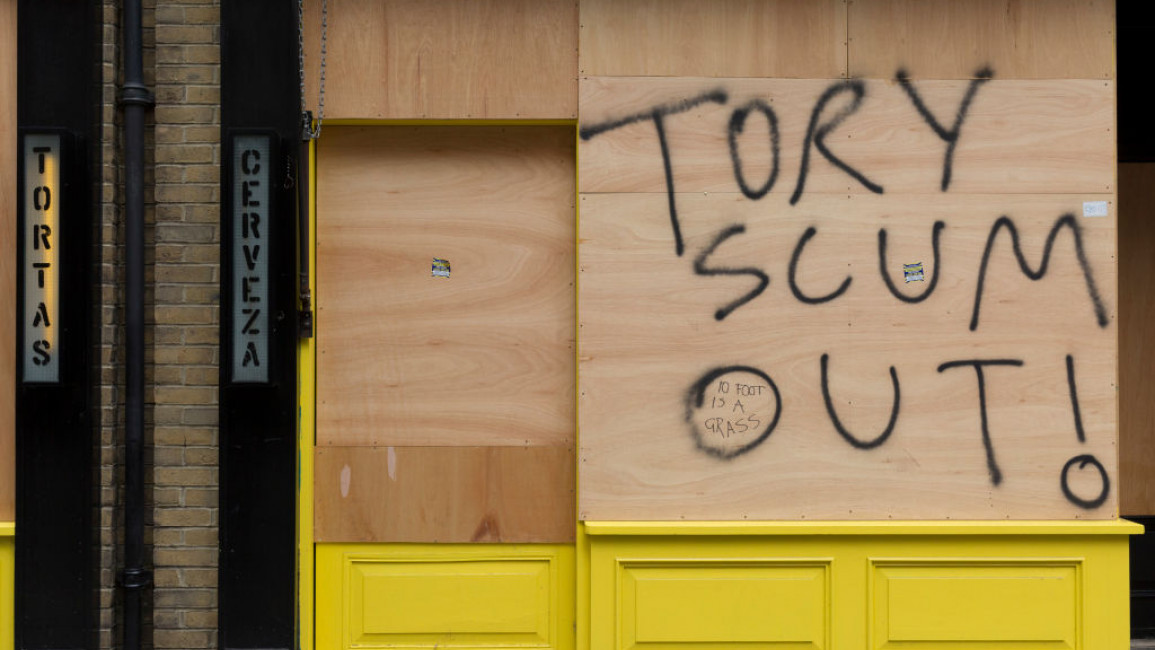
England’s local elections: Tories out, radical Labour policies in
“We’re fed up with everything!” was one voter’s verdict, summing up May 4th’s UK local election results. The governing Conservatives were decisively rejected, not just over their handling of the economy and running down of public services, but also over their divisive attacks on immigration and human rights.
Voters across England – but not other UK regions - voted for local councillors in over 8,000 seats across 230 councils. The Tories said in advance they could lose as many as 1,000 seats. In fact, they lost more.
Turnout was low, reflecting the fact that austerity since 2010 means councils can do little more than crisis management. Over the last decade, over £100 billion has been cut by central government from local budgets.
''The results also provided a warning to some in Labour’s leadership who seem intent on pursuing a factional war against the party’s left wing at the expense of winning. Some council candidates deselected by Labour officials and who ran as independents won re-election without Labour backing.''
Another factor hitting turnout was a new law requiring voters to have photographic identification. Many voters without the right ID were turned away from polling stations, with some reports suggesting the number was as high as 25%.
Convictions for voter fraud by individual voters is very rare in Britain – so the new rules look like a form of voter suppression, aimed at discouraging poorer and younger voters, who are least likely to vote Conservative.
The results showed significant gains for Labour – an increase of over 500 seats and 19 councils in total, making it the largest party of local government. The Conservatives suffered considerable losses in their southern heartlands, a reflection both of changing demographics as more lower income people are forced out of London by high rents and property prices, and of the fact that more socially liberal voters are alienated by increasing Conservative authoritarianism.
Even on the southeast coast, where the Tories’ focus on stopping immigration might have been expected to shore up their fortunes, they did poorly, with Labour making gains, some of their new councillors high-profile supporters of refugee rights.
Labour did particularly well in areas where radical change was on the agenda, such as Preston where the council has done an outstanding job of attracting and retaining within the city through its community wealth building approach. It was rewarded at the polls by an increased majority. Similarly radical Labour campaigns also tended to do well.
Former Shadow Chancellor and veteran Labour MP John McDonnell hailed the results as a clear anti-Tory vote, but added; “What the elections haven’t confirmed yet is that there is an equally strong, motivated support for Labour. Hence the diversion of a sizeable element of the anti-Tory vote to the Liberal Democrats, the Greens and the spectrum of independent candidates.”
The centrist Liberal Democrats won over 400 seats and took control of 12 councils, mostly in Conservative heartlands. The Greens also did well, gaining 241 more seats, doubling their total number of councillors to 481. This was a major breakthrough for the party, which is attracting former Labour voters who are alienated from the current Labour leadership’s lacklustre centrism.
The results also provided a warning to some in Labour’s leadership who seem intent on pursuing a factional war against the party’s left wing at the expense of winning. Some council candidates deselected by Labour officials and who ran as independents won re-election without Labour backing. And there was a warning too from Leicester where Labour officials blocked 19 sitting Labour councillors, mainly from minoritized communities, from re-standing. Labour haemorrhaged support, losing 22 councillors, with the Conservatives gaining 17.
We should be cautious about extrapolating too much from this election, which was exclusively in England and where a large number of independents were running. But if these results were replicated at a general election – still potentially over 18 months away – Labour would emerge the largest party in a House of Commons with no overall majority. The prospect of this could make the leader’s personality and judgment a key issue at the next general election.
That might worry Labour leader Keir Starmer. Current polls suggest that among Labour voters 48% are satisfied with his performance versus 45% dissatisfied. Compare this to Rishi Sunak, whose scores are 75% and 15% respectively among Tory voters.
Some see emerging parallels with the 1992 general election which Labour narrowly lost under Neil Kinnock. The scale of Labour’s task, suggests one recent analysis, “is arguably even bigger than the one Kinnock faced in 1992. Without a major revival in Scotland, experts calculate that the party will need a swing of up to 13 per cent in England to govern with a majority. It means that if Labour edge towards Hung Parliament territory, the ‘question of trust’ on Starmer’s deals with the Scottish National Party and the Liberal Democrats will become the dominant political narrative.”
Labour were wiped out in Scotland in the 2015 general election by the SNP which positioned itself to the left of Labour on most issues. The SNP is now engulfed in a major crisis which has precipitated a police investigation, but there is little sign of a Labour recovery in Scotland, where the party desperately needs to win seats.
Labour can take comfort that it did particularly well among non-graduate voters. Working class voters who deserted Labour in 2019 may be returning to the fold. But the party’s leadership should also worry that its authoritarian streak could alienate more liberal-minded graduates, among whom Labour did well in 2017, and who may now be looking elsewhere. Keir Starmer’s announcement a few days before the election that he was dropping his pledge to scrap university tuition fees, without announcing any alternative, won’t have helped win that cohort over.
In short, Labour still has a hill to climb to win a governing majority at a general election next year. The clear takeaway from these results is that a radical, optimistic message, clearly differentiating the party from the Conservatives in policy terms is the way forward.
Mike Phipps’ book Don’t Stop Thinking About Tomorrow: The Labour Party after Jeremy Corbyn is available from OR Books. He writes regularly for Labour Hub.
Follow Labour Hub on Twitter: @LabourHub
Have questions or comments? Email us at: editorial-english@newarab.com
Opinions expressed here are the author's own and do not necessarily reflect those of her employer, or of The New Arab and its editorial board or staff.




